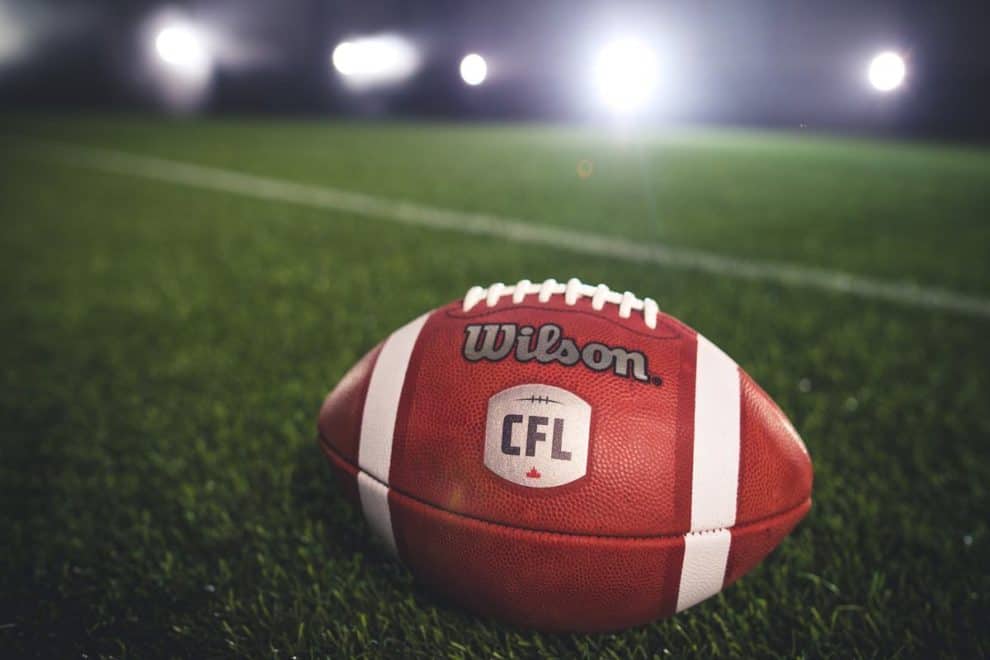
- The 2023 Canadian Football League (CFL) season began on Thursday, June 8.
- The 2023 CFL season is heading into Week 3.
- The Toronto Argonauts were the 2022 CFL Grey Cup champions.
The Canadian Football League (CFL) season began on June 8 at McMahon Stadium in Calgary. On that night, the hometown Stampeders lost a 25-15 decision to the BC Lions. The league is happy to get back to business…well, ‘business as usual’….after a rough few years due to the COVID-19 pandemic and its aftermath. The season will conclude on Sunday, November 19 with the Grey Cup championship as the Toronto Argonauts will try to defend their league title.
CFL football might not be at the same competitive level as the NFL but it is a very entertaining brand of gridiron action. Unfortunately, it doesn’t get the coverage it deserves in the US sports media. The good news is that thanks to the Internet there’s plenty of Canadian media sources available online and that has made following–and handicapping–the sport much easier. Many American fans don’t realize just how long the sport has been popular in Canada. The CFL has existed since 1930 and the league championship–known as the Grey Cup–dates back to 1909.
Most importantly, the CFL presents a great betting opportunity for the astute handicapper. This is where the relative lack of interest in the US works in our favor. The lines in CFL football have never been particularly sharp and to the extent that there is a ‘public perception’ of the sport outside of Canada it’s pretty much inaccurate. For whatever reason, fans have a tendency to think that the CFL is similar to Arena Football in style of play. That couldn’t be further from the truth. While there are a few rules designed to open up the passing game it’s nothing like the end to end shootout you’ll find in Arena Football. In fact, what makes a team successful in the CFL is essentially the same as in the NFL–a balanced offense with a strong rushing component and a capable defense.
THE UNIQUE COMPONENTS OF CANADIAN FOOTBALL
Canadian Football has some unique characteristics and that’s a good place to start understanding the game. We’ve already talked about one of the more interesting elements of the CFL–the quota of Canadian players that each team must have on the roster and in their starting lineup. This system is known as the ‘ratio’ and was explained in detail in a previous article:
THE CANADIAN FOOTBALL LEAGUE ‘RATIO’ SYSTEM
There are plenty of other differences between CFL football and the NFL game. In fact, the differences begin at the most fundamental level–with the football itself. The CFL football is bigger–essentially the same size as a #3 rugby ball making it slightly longer and fatter than the NFL football. The CFL field dimensions are longer (110 yards) and wider (65 yards) than the NFL gridiron. The CFL end zones are 20 yards deep (as opposed to 10 yards in the NFL) and the goalposts are on the goal line while the NFL goal posts are on the end line at the back of the endzone.
Despite the prevalence of the metric system in Canada the CFL rulebook still uses Imperial measurements. That means you need 10 yards to get a first down in the CFL, not 9.144 meters. One major difference, however, is that CFL teams only have 3 downs to move the ball 10 yard as opposed to the 4 downs familiar to NFL fans. If you listen to the play by play of CFL games it takes some time to get used to hearing the announcers talk about a team going ‘two and out’.
CFL teams also have 12 players per side on the field, obviously one more than the NFL’s 11. The extra player is a receiver on offense and a safety on defense and this is likely where the misconception that the CFL is is ‘video game football’ originates. There are a few other subtle differences as well—teams only have 1 time out per half, only 20 seconds between plays, and all backfield players can be in motion prior to the snap (as opposed to only one in the NFL).
Scoring is the same as in the NFL with one exception–that is the ‘single’ or ‘rouge’. When I first started to follow CFL football and I saw a game tied 1-1 at the end of the first quarter I thought my Don Best odds screen was malfunctioning. It wasn’t–in the CFL teams can score a single point called (more typically) a ‘single’ or occasionally a ‘rouge’. The origin of the ‘rouge’ term isn’t really known–the word means ‘red’ in French and there are theories that at one point a red flag was used to signify the score in the early days.
The most comprehensive explanation for the ‘single’ I’ve heard is this: any kicked ball that becomes dead while in possession of a team in its own goal area, or goes out of bounds or over the dead ball line. If a punt goes through the end zone it’s a single. If a punt returner kneels down after catching the ball it’s a single. A missed field goal that sails out of the end zone is also a single.
Stay tuned for more CFL analysis and information throughout the 2023 season!









